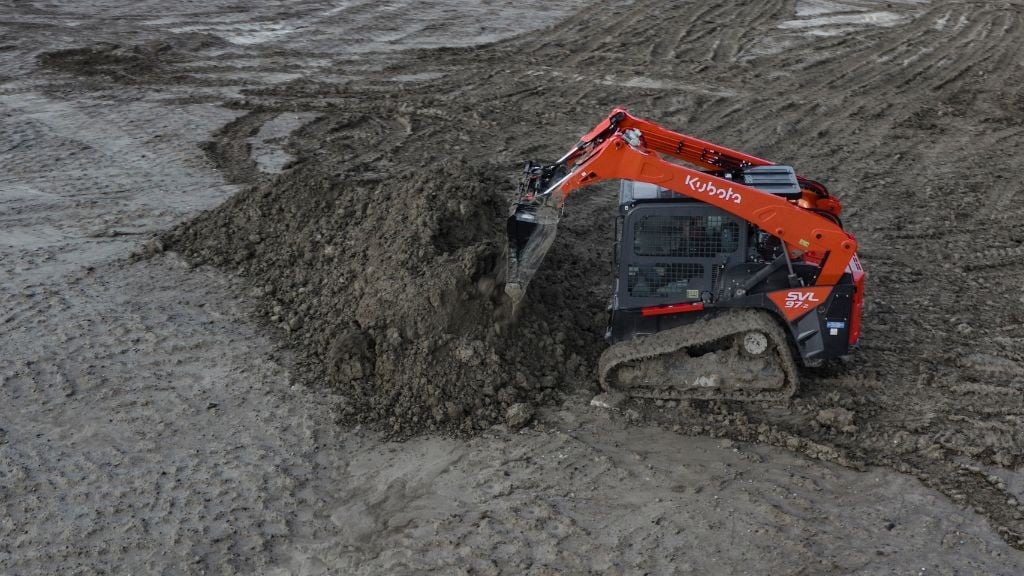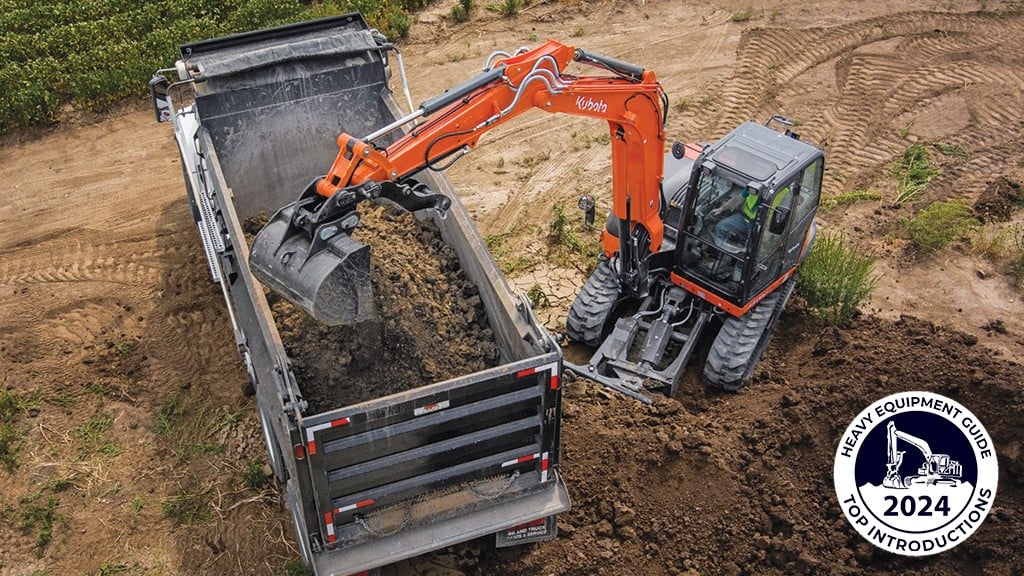Compact equipment is playing an increased role in mining reclamation
How small, agile machines are used in landscape restoration projects across Canada

With hundreds of millions invested annually in land restoration, mining companies are increasingly calling on skilled contractors to transform disturbed landscapes back to productive, sustainable environments.
Faced with remote locations, sensitive ecosystems, and tight budgets, contractors are turning to compact equipment to complete projects faster with less environmental impact while saving on operating costs.
From backfilling and soil preparation to seeding and landscaping, here's how these smaller, more agile machines are being utilized in mining restoration projects across Canada.
Backfilling and soil replacement
Compact equipment offers unmatched versatility as it can be fitted with different attachments. For example, skid steers and compact track loaders (CTLs) can be equipped with different styles and sizes of buckets, depending on the material that is being used to backfill, allowing for faster, more efficient, and precise work.
While many reclamation sites cannot be easily accessed by heavy machinery, mini excavators are ideal for soil replacement and contouring in tight spaces. In addition to moving and spreading soil efficiently in difficult-to-reach areas, they reduce land disturbance and are more cost-effective for small- to medium-scale tasks. Similarly, CTLs with grading blades and box blades can create gentle slopes and smooth, level surfaces, helping improve drainage, prevent erosion and create the desired topography.
Improved soil preparation
Soil preparation before seeding plays a vital role in land reclamation, and it often requires the use of compact tractors and agricultural tools. Larger industrial machinery typically isn't as effective, as it tends to reduce seed germination rates.
High-speed compact discs are specifically designed to break up compacted soil and mix in organic matter, like crop residues, mulch, or cover crops. This process helps loosen the soil and enhances its texture, making it more favourable for planting. The discs create a fine, even, and well-aerated seedbed, which is crucial for optimal seed germination. The soil is tilled to the correct depth and texture, ensuring that seeds have the best possible conditions for growth. Additionally, the disc's action levels the soil, filling in low areas and smoothing out high spots, ensuring uniform seed distribution.
After the discs have prepared the rough seedbed, power harrows can be used to refine the soil texture by smoothing and levelling it, creating an optimal environment for seeding, which is essential for successful germination. These harrows, available in smaller mounted models, are perfect for hard-to-reach or difficult terrain. However, it's important to ensure the harrow is tested in rock quarries for durability under harsh conditions.
More precise seeding
Seeding marks one of the final steps in the land reclamation process. Compact no-till drills are particularly effective for this task as they help protect vulnerable topsoil from erosion. Unlike traditional tilling methods, which can compact the soil or disrupt essential soil organisms, no-till seeding minimizes soil disturbance, conserves moisture, and significantly reduces erosion, fostering healthy plant growth.
By planting seeds precisely while maintaining soil integrity, no-till seed drills help restore ecosystems, supporting long-term ecological recovery. The best no-till drills are equipped with multiple seed box options, allowing for different seed types to be planted at varying depths. They also feature specialized Native Grass seed boxes designed to handle the tough-to-seed varieties commonly used in reclamation efforts.
Landscaping for long-term success
Landscaping plays a crucial role in enhancing land reclamation projects by introducing ecological improvements such as erosion control, increased biodiversity, and the creation of functional spaces. These enhancements not only improve wildlife habitats but also elevate the overall visual appeal and quality of life in the area, all of which are essential for the long-term success of the reclamation process.
During this final stage, compact construction equipment is used for tasks like grading, levelling, excavating, material handling, debris removal, and more.
Get the right equipment for the job
From project start to finish, compact equipment has become integral to land reclamation efforts across Canada, providing contractors with the versatility and durability required to complete complex and delicate tasks in remote environments, both efficiently and cost effectively.
If you're purchasing new compact equipment for a land reclamation project, you'll want to look for:
- Reliability, durability, and performance to ensure long-lasting use on the job site.
- Powerful engines that provide fuel efficiency, greater power output, and quieter operation.
- Strong lifting capacity and breakout force for handling heavy materials and tough jobs.
- Precision and control, allowing operators to perform detailed tasks like grading, contouring, and soil preparation with minimal environmental disruption.
- Attachment versatility to handle multiple reclamation tasks with the same machine, reducing the need for additional equipment and improving overall efficiency.
- Comfortable, spacious cabs for operators, with intuitive controls to make the job easier and safer.
- Easy maintenance with accessible points for checking fluids, filters, and other components.
- Telematics systems for tracking machine data such as hours worked, fuel levels, location, and maintenance needs.
Jonathan Gardner is the Construction Equipment Product Manager and Jeff Fuller is the Tillage, Seeding, and Crop Care Product Manager at Kubota Canada.



